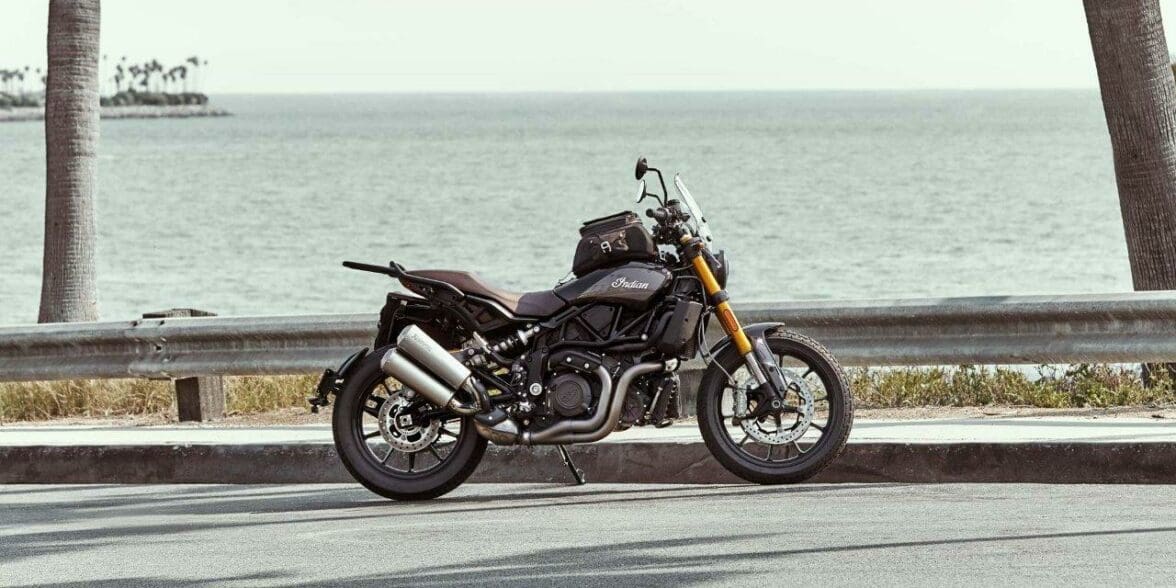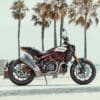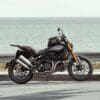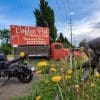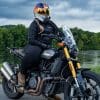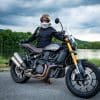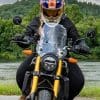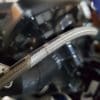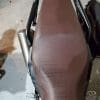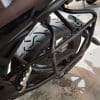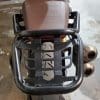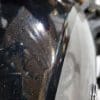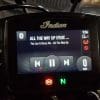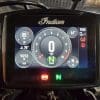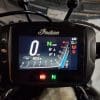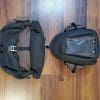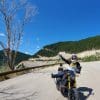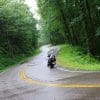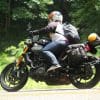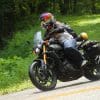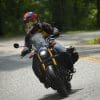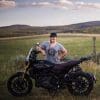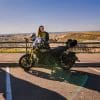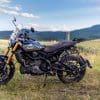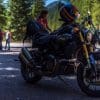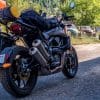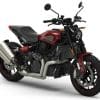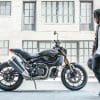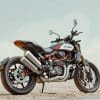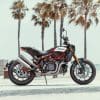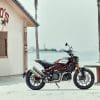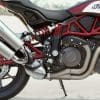Last summer I rode an Indian FTR 1200 S from Vancouver, Washington to Robbinsville, North Carolina. For context, I’ve ridden extreme long-distance trips on several motorcycles before.
Here they are in case you’re curious: 2009 Triumph Street Triple R 675, 2011 Yamaha VStar 650 Classic, 2012 Kawasaki Concours 1400, 2018 Suzuki GSX-S 750, 2019 Yamaha XSR900, and 2019 Yamaha MT-09.
As you can see, I’ve got an eclectic list, with one feature that is common in all but one of those bikes – naked/minimal faring styling. So, no, this was not my first rodeo on a bike not purpose-built for touring.
I feel like that needed to be said upfront because we all know long-distance on a naked sportbike isn’t for everyone. I’m just one of the weirdos who love it. The touring accessory package, which I will review below, helped in a big way.
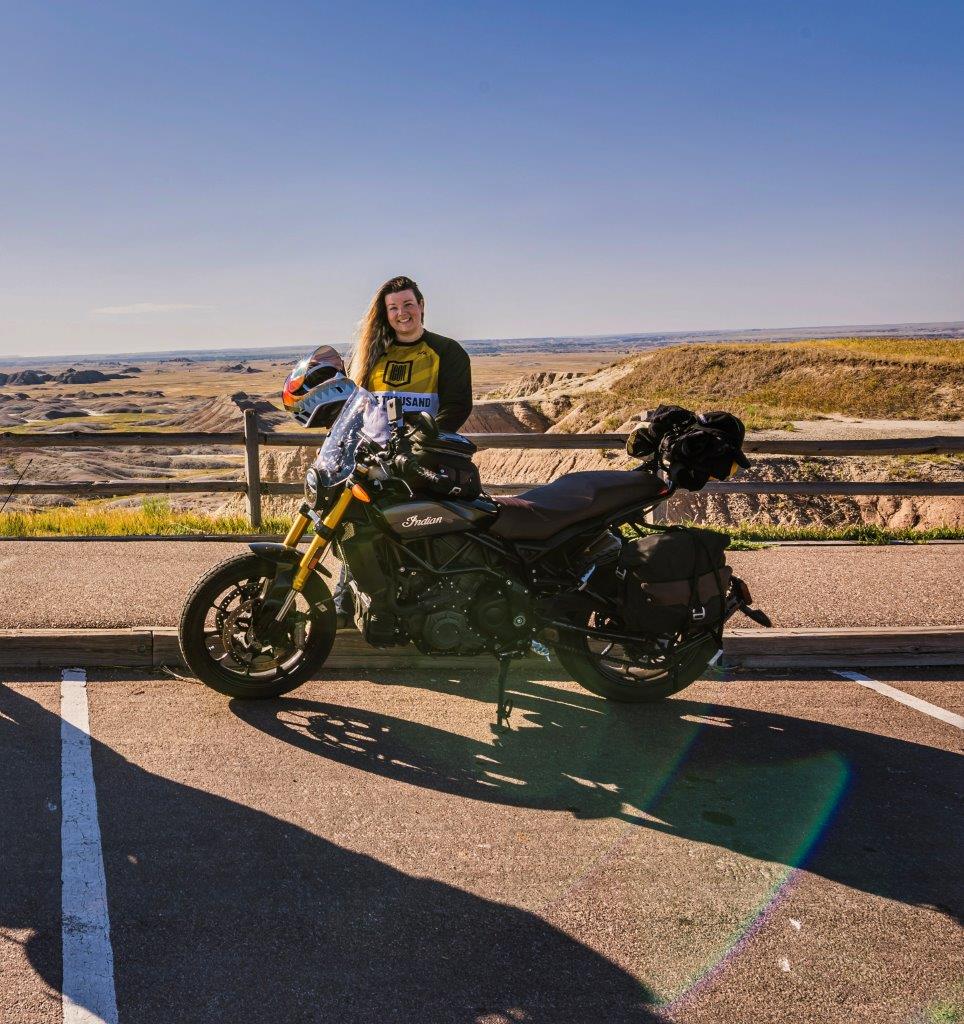
For the first 500 miles, I compared the FTR to my favorite motorcycles of the past. However, the flat track roots, modern tech, V-twin configuration, sleek styling and high-end touches meant the Indian FTR 1200 S was simply unlike anything I had ever ridden before.
Once I got over the idea that this bike should be compared to anything else at all, I started to really focus on what it had to offer, and where it could improve. Nearly 4000 miles later, I’ve been able to nail it all down and express my feelings eloquently, and hopefully do this marvel of a motorcycle some justice.
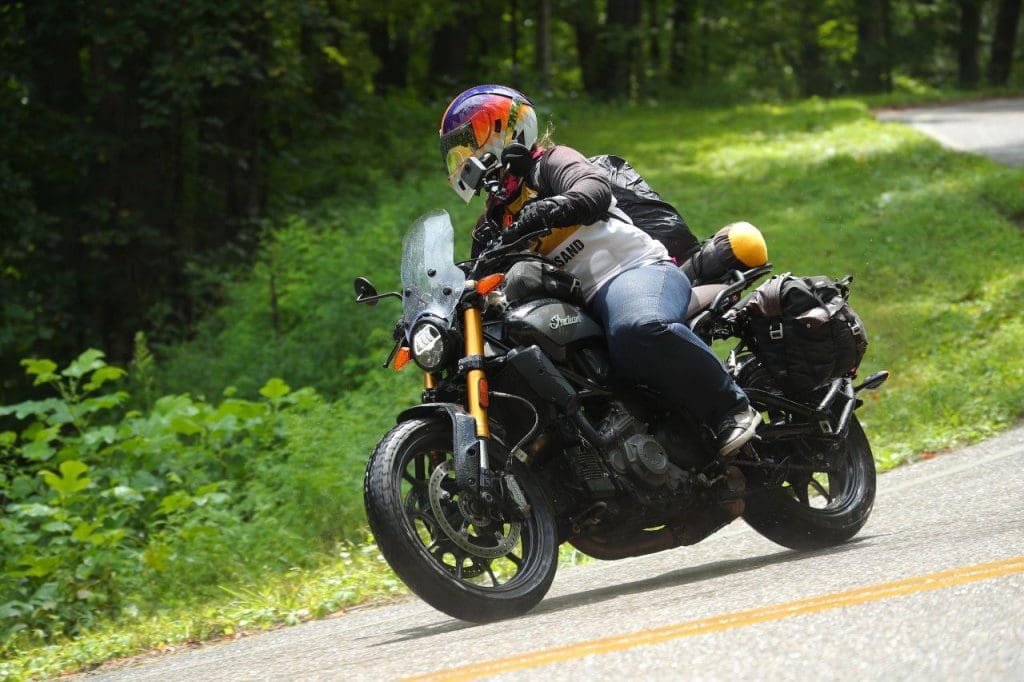
The FTR 1200 S Has Curb Appeal Out The Wazoo
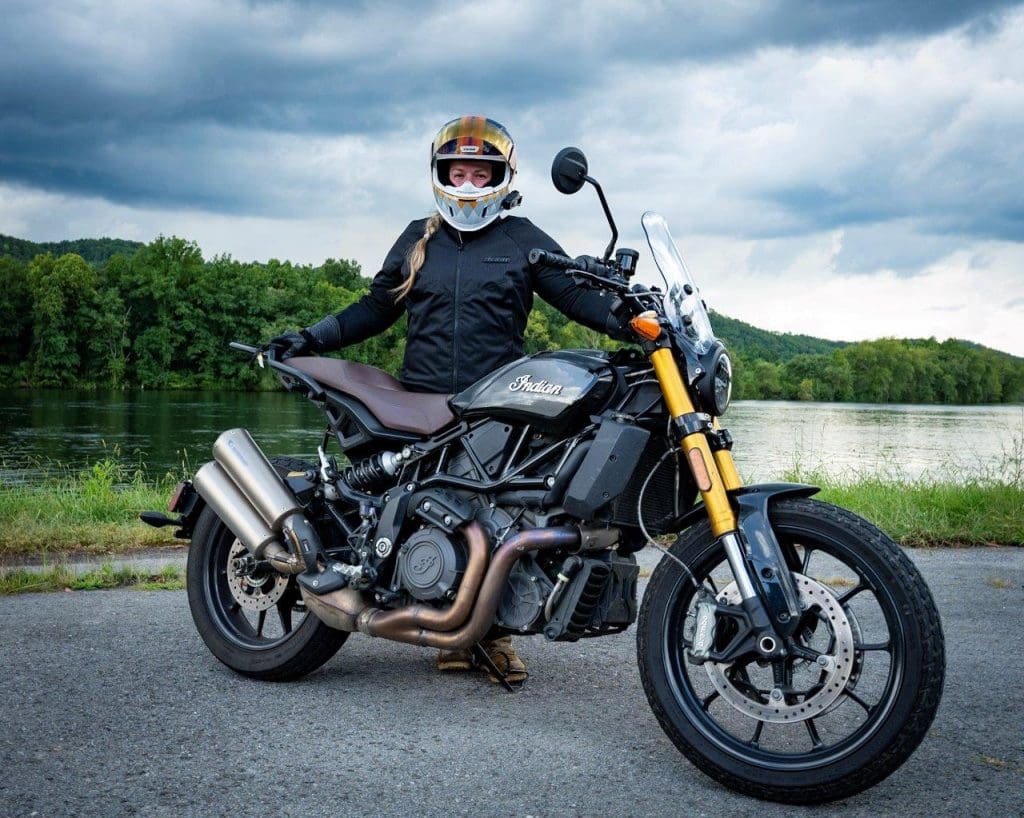
There is no denying the visual appeal of the FTR. The model I tested came in the “Titanium Metallic over Thunder Black Pearl” color scheme, which might be assumed as more subdued compared to the “Indian Motorcycle Red over Steel Gray” and the “Race Replica” color scheme.
However, there is nothing subdued about it, because the black paint possesses a deep layer of flake that catches the light and glistens in an array of colors. I was pleasantly surprised when I saw it in the sunlight for the first time.
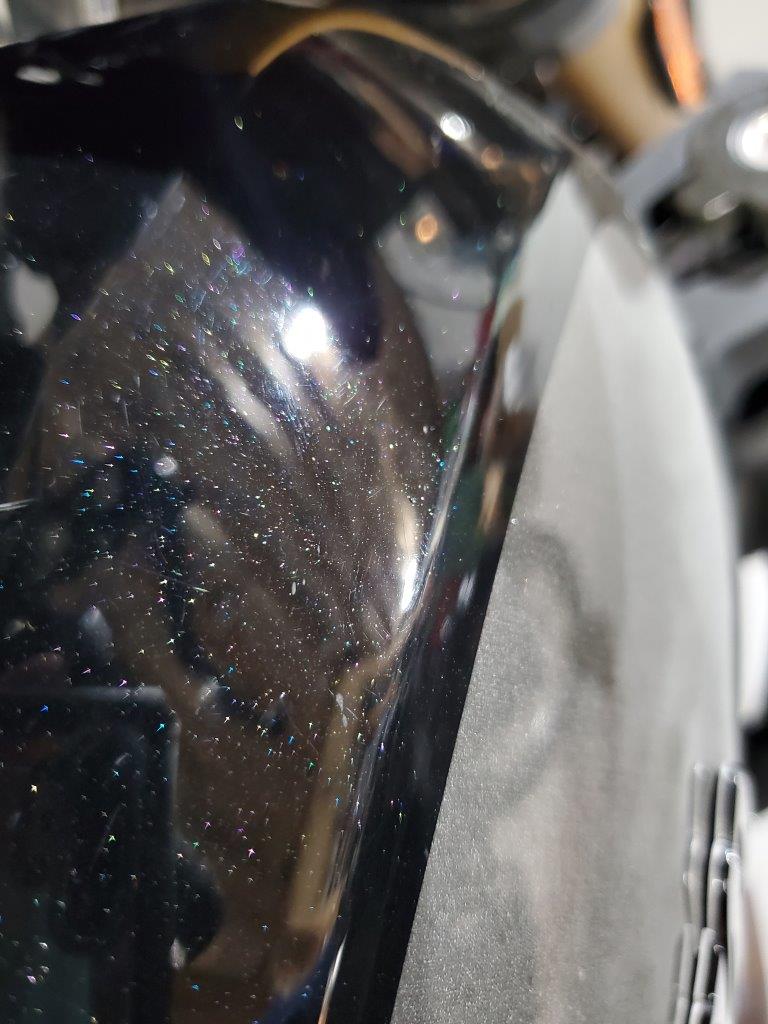 |
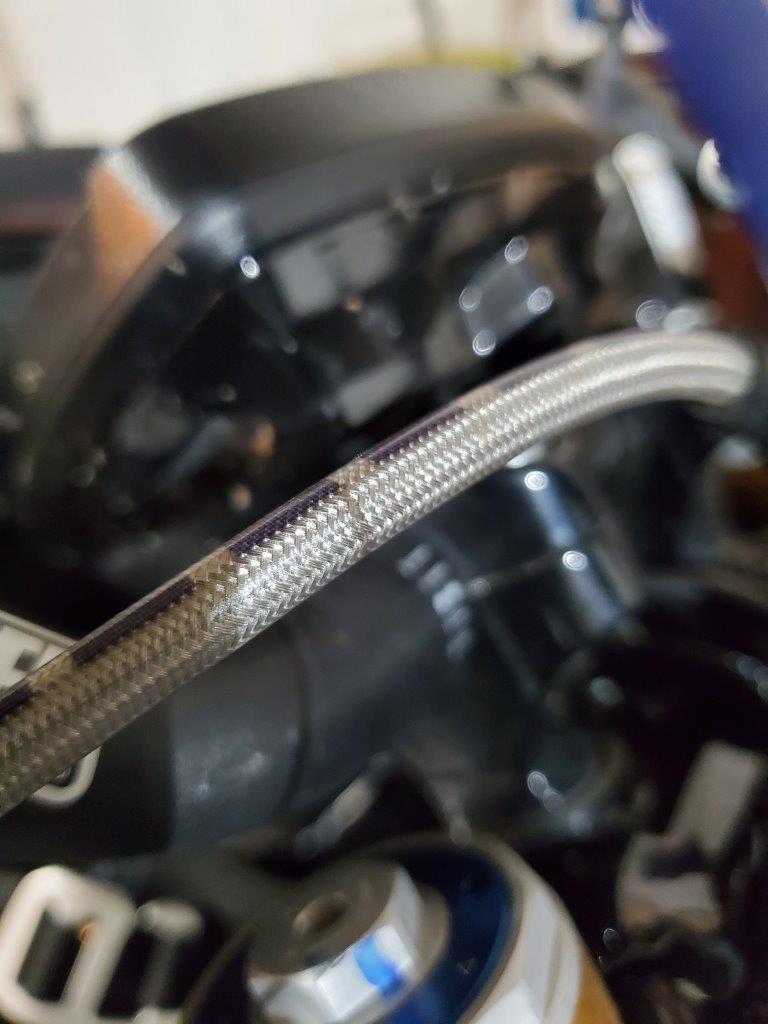 |
|---|
Photo Credit: Brittany Morrow
Beyond the color scheme, the shape of the FTR does not disappoint. The “tank” (not actually the tank, but a plastic cover made to look like the tank – more on that later) is wide and low and accented with 2 chrome stripes up the center to add some extra flash.
A single scooped seat extends all the way back from the tank to the tail, ending in a cool and uniquely-shaped LED tail light. The naked front end features wide and almost flat handlebars, braided lines, a sleek display in place of a traditional gauge cluster, gold fork tubes and a single round LED headlight.
A simple tubular frame allows the engine to stand out and the dual Akrapovic exhaust muffler to shine.
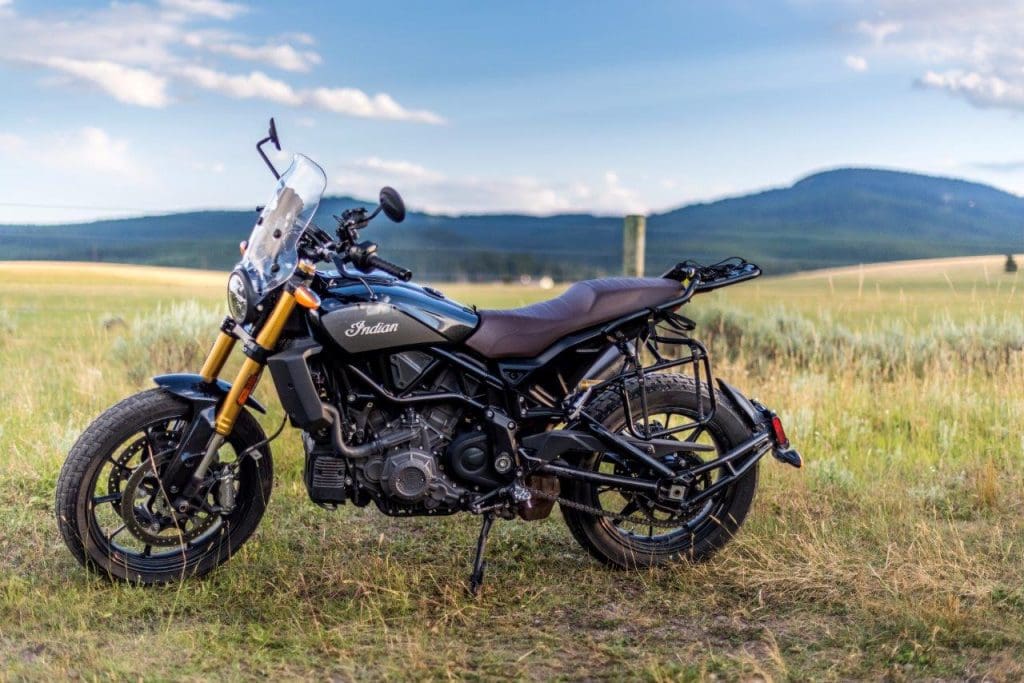
This whole look, I feel, is super classy, aggressively sporty, and cool. The public agrees – the FTR got more compliments from strangers than any other bike I’ve ever ridden. When people found out it was an Indian, I got extra street cred and a few air first bumps (thanks, Covid).
All in all, it seems like everyone loves the way it looks and the reputation that comes with the brand name. I can’t disagree.
The FTR 1200 S Performs Like A Champion
In the fewest words possible: the FTR 1200 S is extremely powerful, agile, balanced and fun to ride on the street (wet and dry) and the dirt.
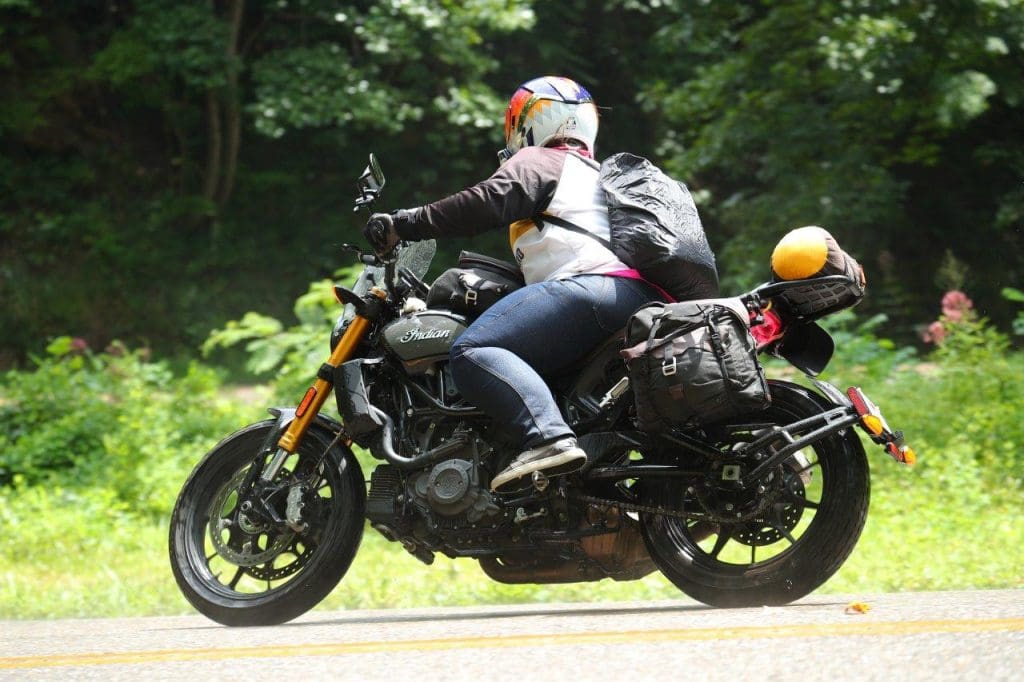
In more words, the 1203cc V-twin engine is strong in a way that you can feel at every RPM. On the low end, the torque is impressive and punchy. Zipping around town or in the twisties is fun and easy. At the higher end, everything is smooth and never buzzy.
Cruising at highway speed is effortless. The FTR’s impressive engine delivers progressive power that drives the bike forward without hesitation even at higher speeds, making long sweeping turns the most satisfying way to ride this bike.
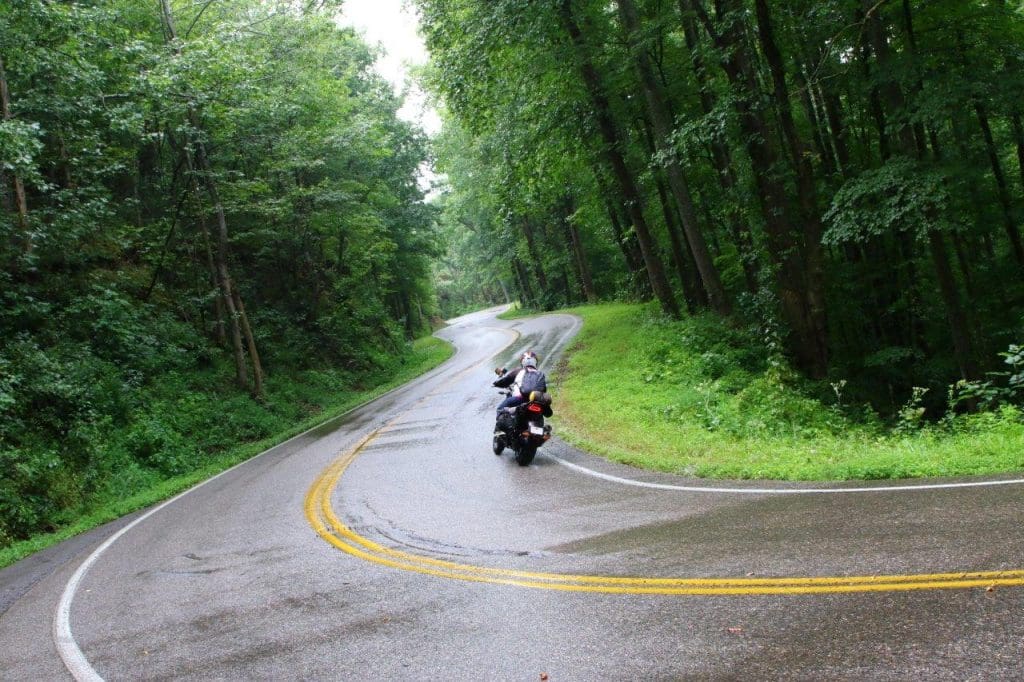
Remember when I mentioned the tank wasn’t really a tank? The fuel actually sits under the seat, lowering the center of gravity on the FTR and making it extremely well balanced and agile.
The bike is heavier than a sportbike, but it doesn’t feel heavy, hard to control, or unwilling to corner in any way. It was impressively cooperative when I asked it to perform in the switchbacks like my Street Triple R, and in the big sweepers like my Yamaha R6.
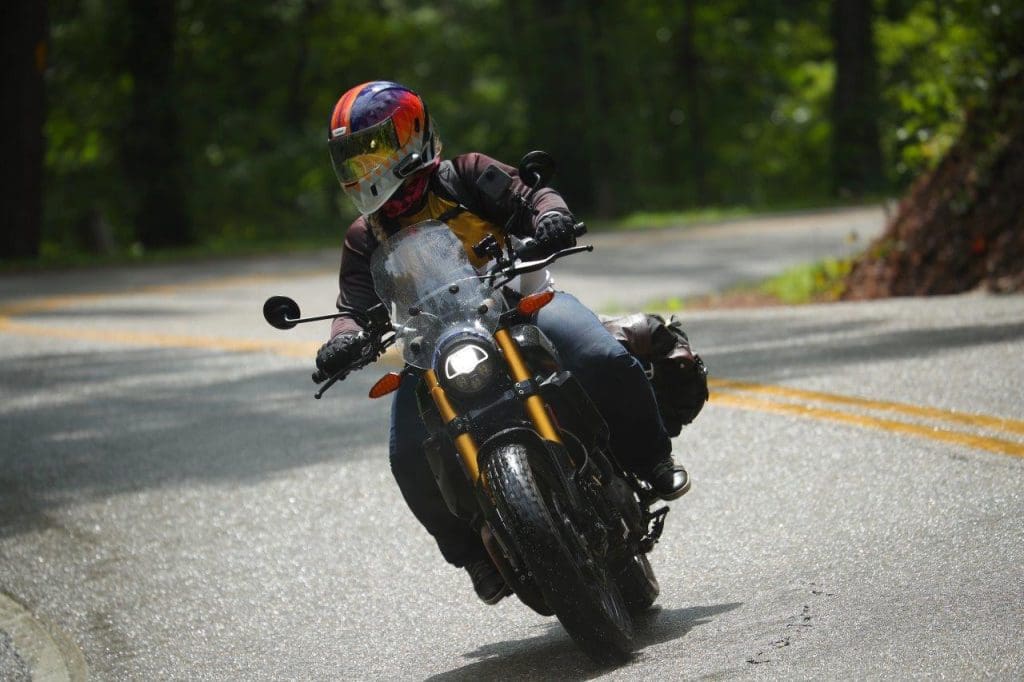
Fully adjustable front and rear suspension allowed for precise preload, compression and rebound settings that fit my preferred riding style. Further adjustability came in the form of three different ride modes (rain, standard, sport) to help me tailor the fuel mapping, ABS and traction control to my current situation.
I never, after covering nearly 4000 miles, found myself wanting more power from the engine or control over the settings.
The FTR 1200 S Has Extremely High “Standards”
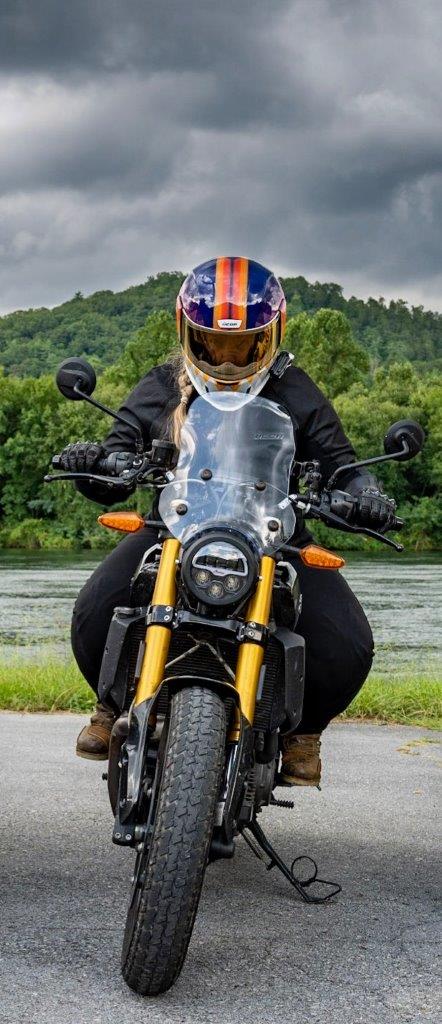
Oh FTR 1200 S, how did your standard features impress me? Let me count the ways!
Standard Features of the FTR 1200 S ($13,999)
- ABS and Brembo brakes – awesome response, fantastic stopping power, and superb feedback with an anti-lock braking system in case of a compromised road surface or other extreme circumstance.
- Fully adjustable suspension – a tailored setup with full control, enhancing both performance and comfort.
- Traction Control – like having a backup plan for unexpected and uncontrollable poo-poo road conditions when traction is the goal. Can be turned off for off-road excursions as well.
- Stability Control – this means the bike is smarter than it’s rider, or at least much better at physics and math. Stability control is lean-angle sensitive ABS and traction control, so it adjusts the amount of braking and traction control applied depending on the current amount of lean. Admittedly, I never tested this feature, but absolutely love knowing that it’s there if I ever lose traction or brake too hard in a corner.
- Multi-plate power-assisted slipper clutch – there’s nothing cooler than a bike that blips the RPMs for you when aggressively downshifting. If the clutch is released too quickly, the clutch slips to prevent unwanted loss of traction. Oh, so racey!
- Two words: cruise control. Need I say more?
- Three ride modes (sport, standard, rain) – mentioned already, this is a true performance enhancer for different riding situations. The “track” feature also allows Traction Control and ABS to be turned off. Who’s ready to go flat-tracking with me?
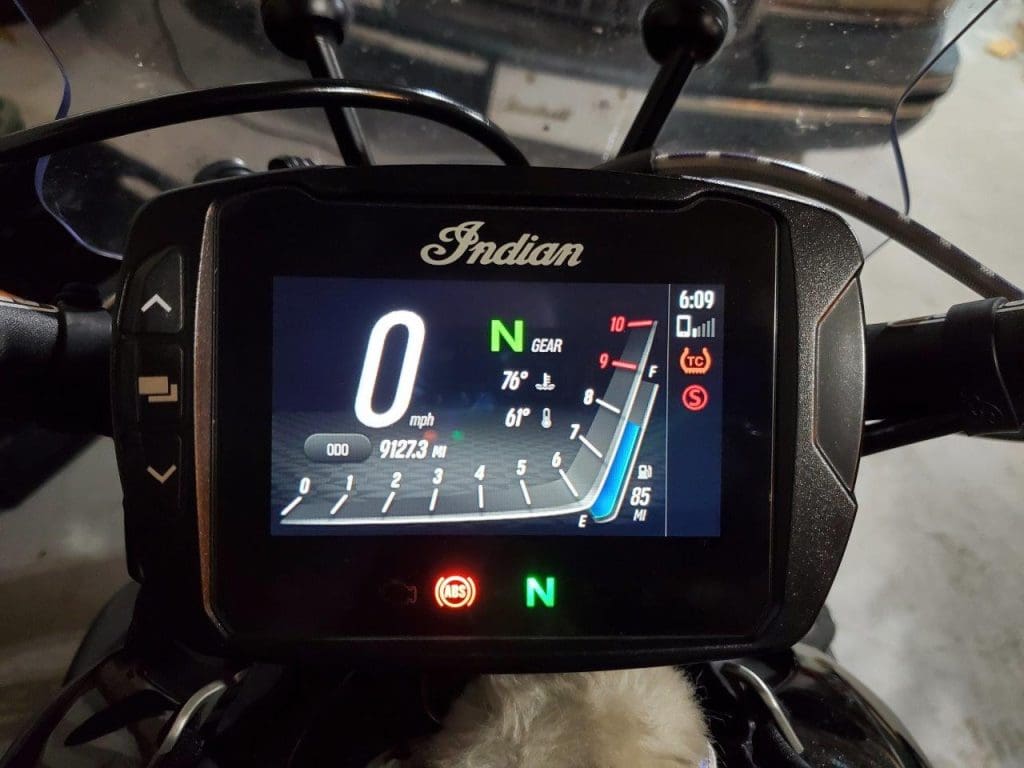
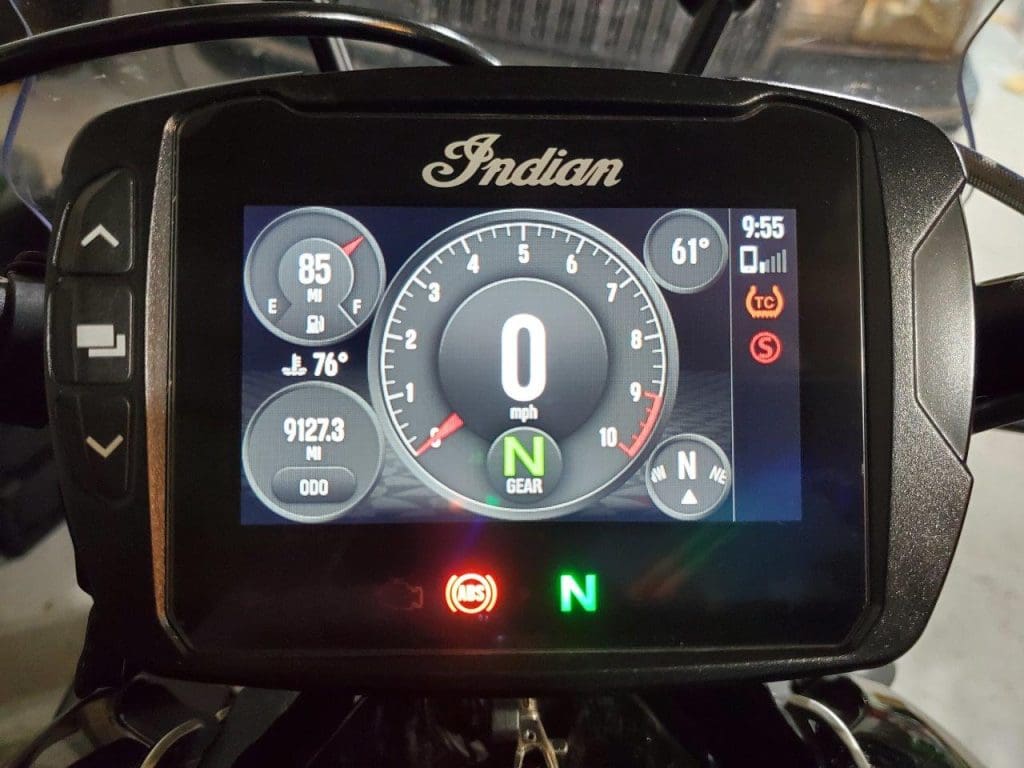
8. 4.3-inch LCD touchscreen – makes the bike feel high-tech, looks cool, and also helps with quick adjustments to ride modes and other electronic features (there are also buttons on the left handlebar for mid-ride adjustments).
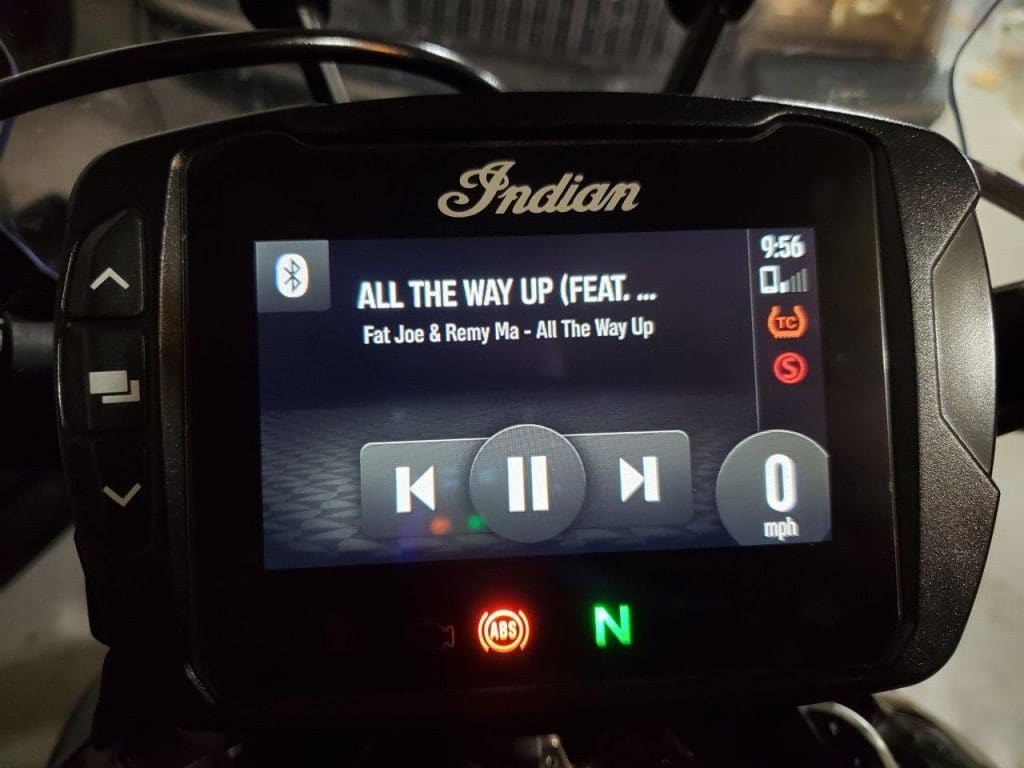
9. Ride Command / Bluetooth – allows you to sync your smartphone to the bike for commonly-used features like music and phone calls, plus you can keep a maintenance schedule handy.
10. USB charging port – no explanation needed.
The only standard feature I truly disliked was the stock tire. I will go into that in detail in just a moment. But first, more good stuff.
Touring Package Add-ons ($3,250)
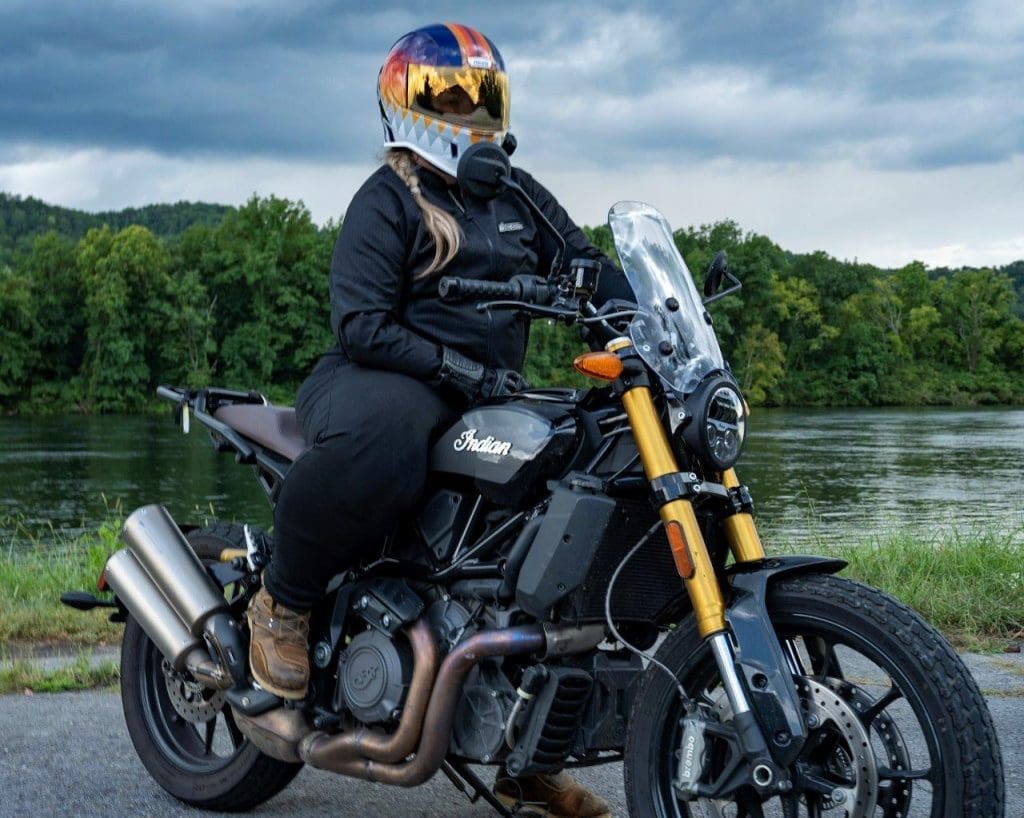
- Low Mount Slip-On Exhaust by Akrapovič – forces a deep growl without being too loud, and straight up just cooler to look at than stock exhaust.
- Polycarbonate Mid-Windshield with mounting bracket – blocks enough wind to be effective without blocking any of the view. This piece single-handedly saved my upper body from the Million Grasshopper March (basically an all-out insect assault) in South Dakota.
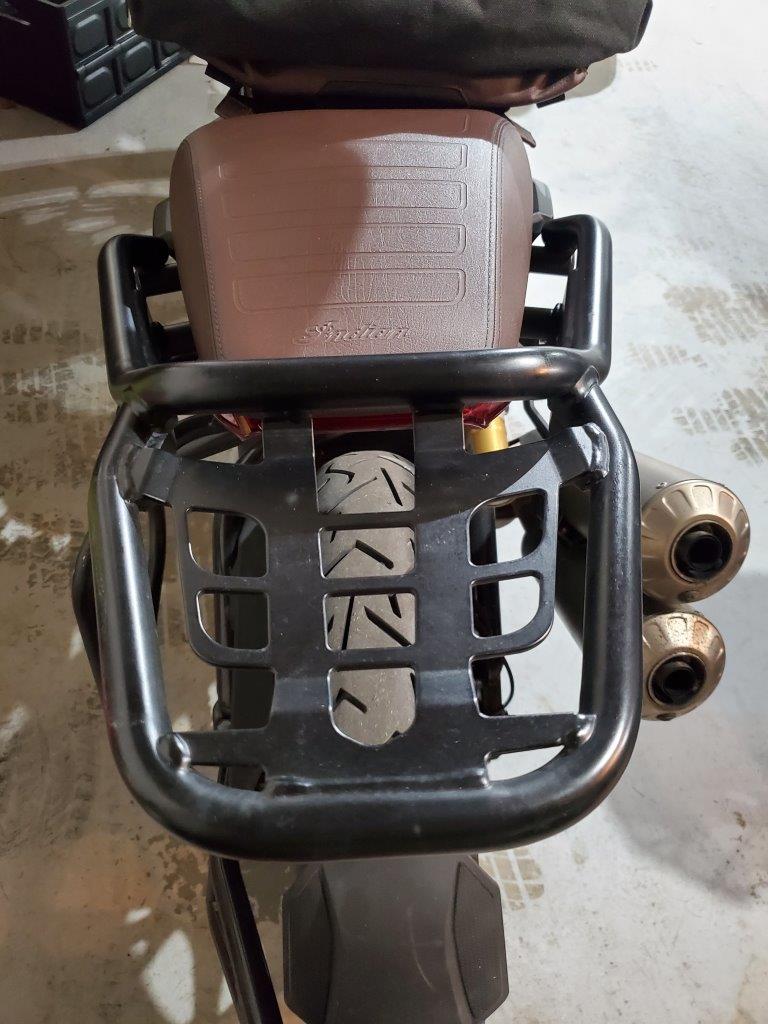
3. Tail rack with mounting bracket – strong, multiple mounting points, and extends the rear seat enough for a large capacity dry bag.
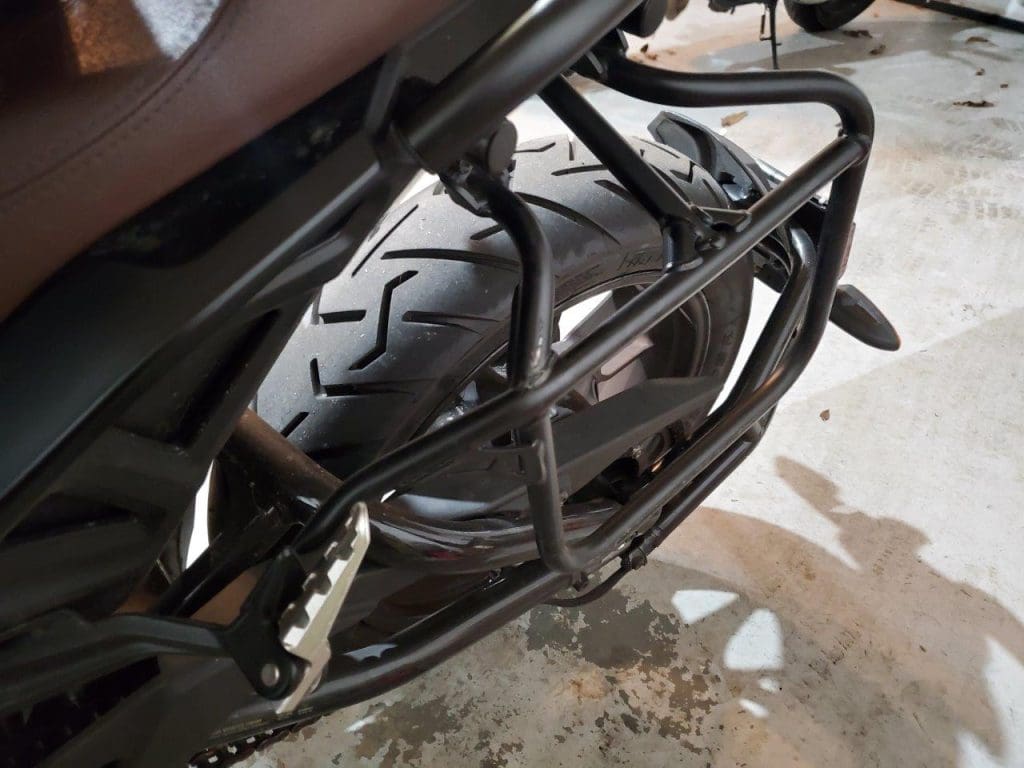
4. Side Rack for messenger bag – easy to secure the corresponding bag and very stable when tasked with carrying a travel tripod as well.
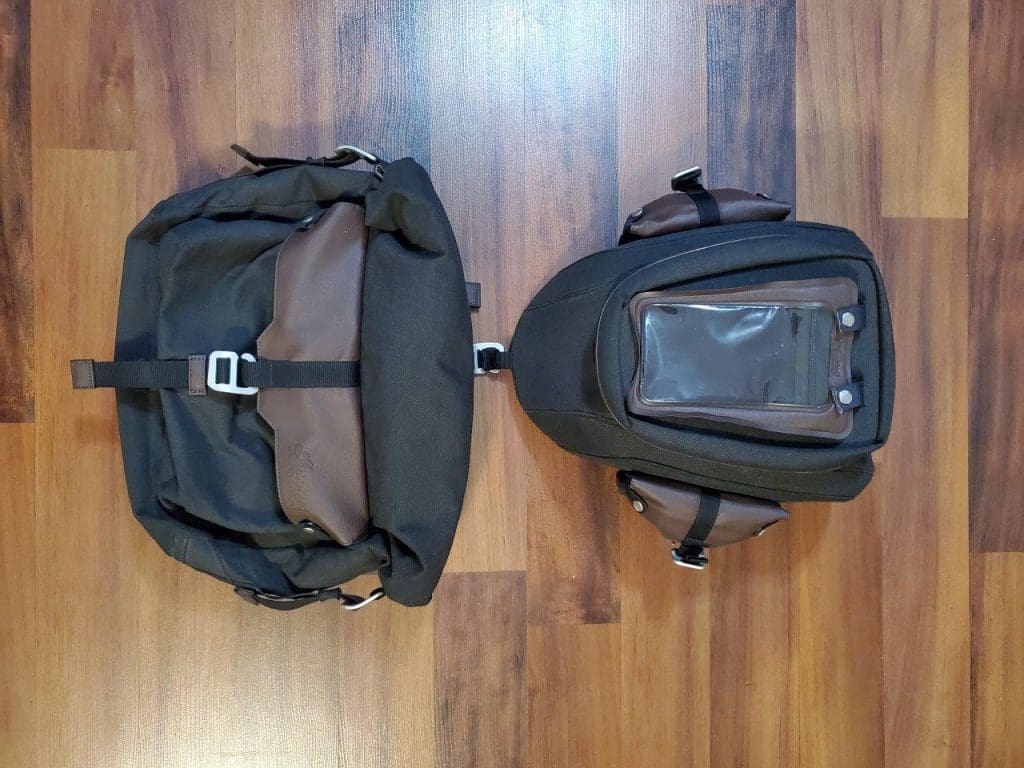
5. All-weather vinyl messenger bag – rugged retro look, medium capacity, waterproofing.
6. All-weather vinyl tank bag – high capacity, weather ready, and rugged retro look.
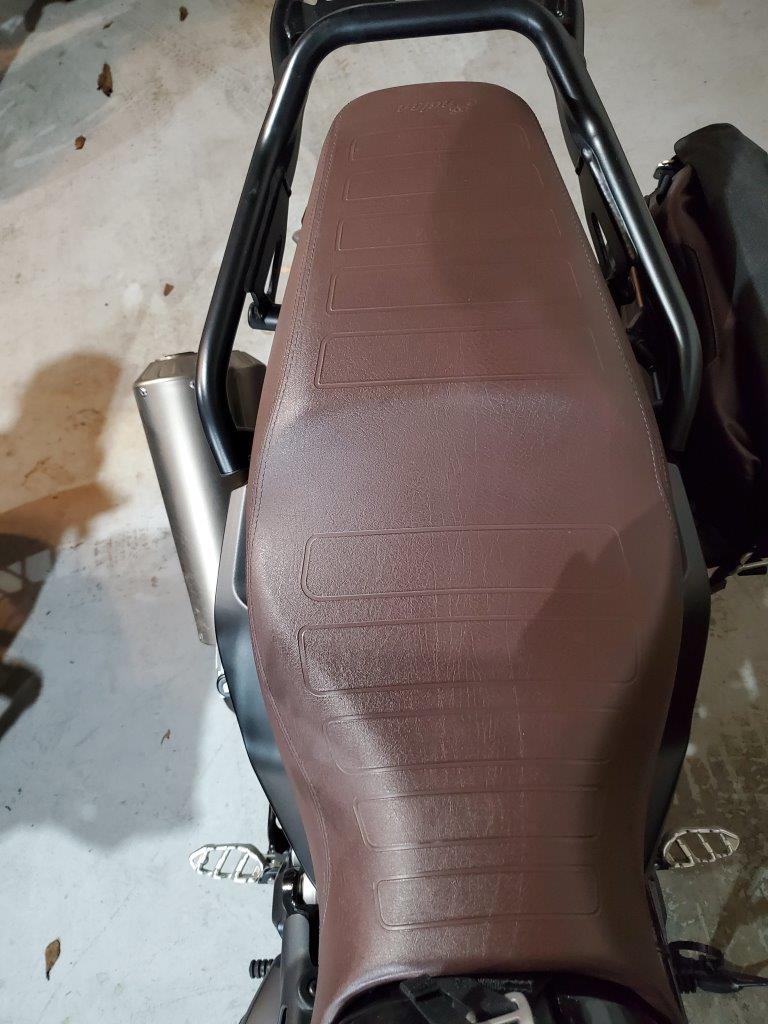
7. Brown all-weather vinyl aviator seat – extremely comfortable for long-distance riding.
This package is absolutely essential for long-distance touring, and although pricey, it keeps the FTR well-under $20,000 and makes sure you’ll be well-equipped on all sorts of long trips.
The FTR 1200 S Has A Learning Curve
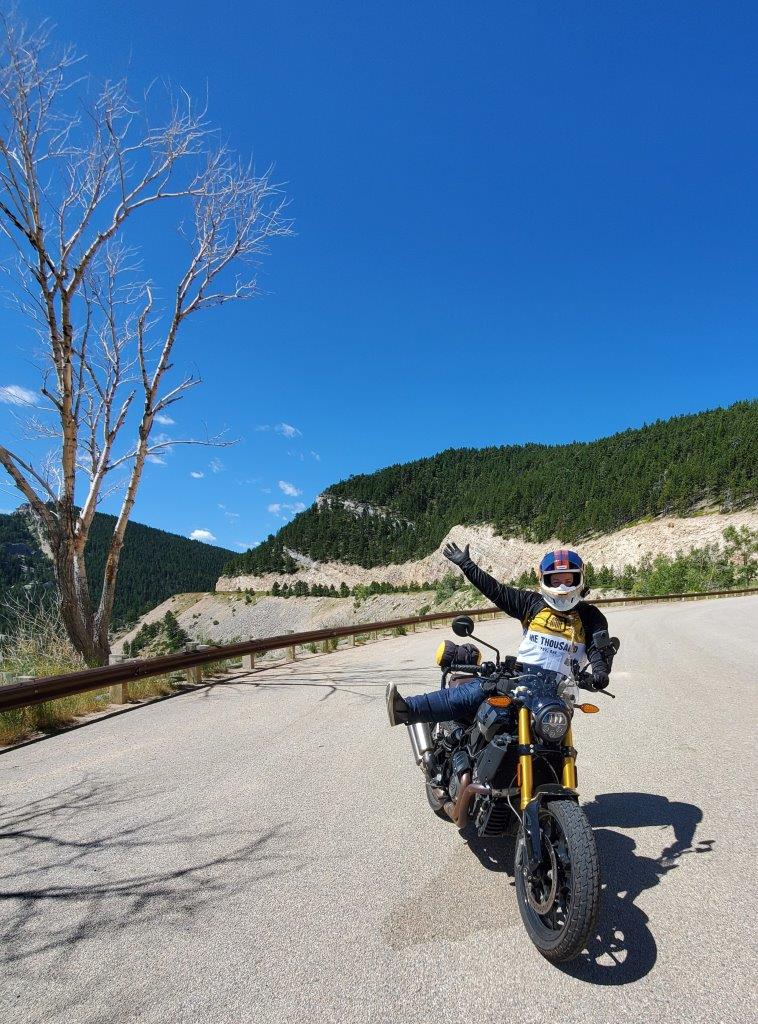
Curveball # 1: Reaching the kickstand after a perfect mount was simply not going to happen. With my right toe holding the weight of the FTR, my left toe sat 4 inches off the ground and wasn’t anywhere near the kickstand.
Admittedly, my inseam is way short for this bike, but as a confident rider I didn’t care – I just wanted to figure out how to make it work. If you are a taller rider, you’ll have no problem, but if you have 32” inseam or less, keep this in mind.
As I am a performance snob, I didn’t want to adjust the suspension out of ideal sag range – and it probably wouldn’t have made much difference in my ability to reach anyway.
Thankfully, an ingeniously-placed and expertly-mounted shock spring clamp-thingy allowed me to flick the kickstand with the tip of my left big toe (both up and down) and my problem was solved.
You can see the clamp-thingy in several of the photos throughout this review. However, if I stopped on any surface that wasn’t 100% flat, getting the kickstand down was an Olympic-worthy performance in timing and balance.
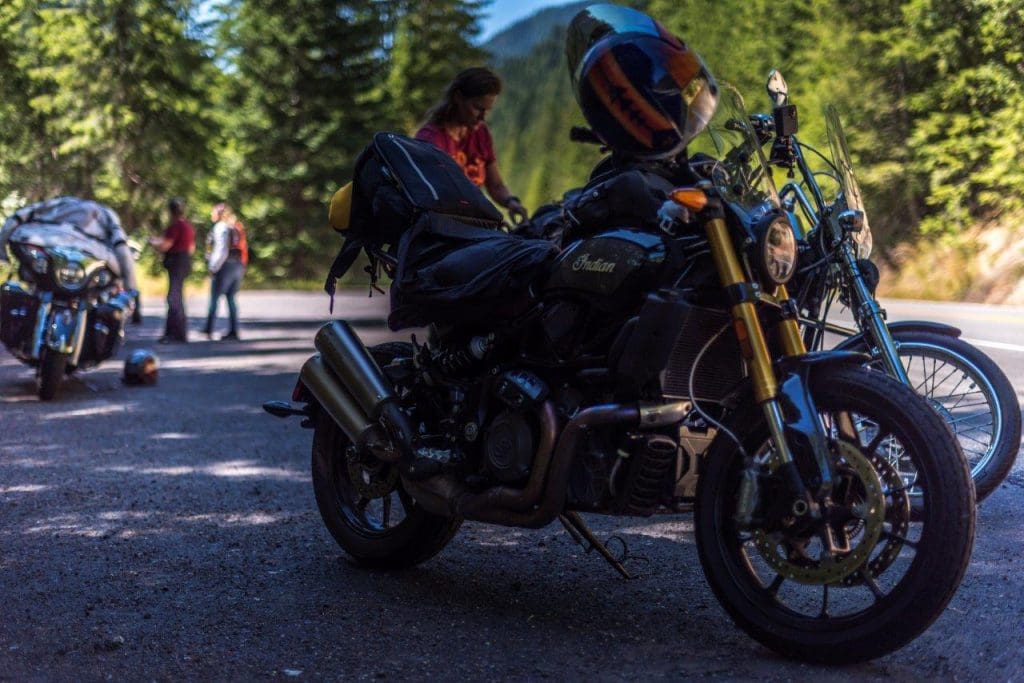
Curveball # 2: The FTR 1200 S is a cold-blooded killer thanks to emissions regulations. The engine needed one good warm up every morning before ever rolling on the throttle. I can’t tell you how many times I forgot to run the bike for at least 5 minutes before attempting to take off with my group, only to immediately stall the bike and have to play catch up like a newb. Oi.
Curveball # 3: The stock knobby Dunlop DT3-R tires (that were developed specifically for this bike) certainly excelled when rolling through the gravel, but they did not play well with grooved roads or metal grated bridges. At all.
Considering that my very first ride after taking possession of the FTR was on a grooved Washington highway, you can only imagine my slight panic when I thought I had two flat tires while riding at 60mph in heavy traffic.
This clearly proves one thing: I am not a flat track racer, and I’m ok with that. For the sake of being open-minded, I decided to give these puppies a real try at long-distance.
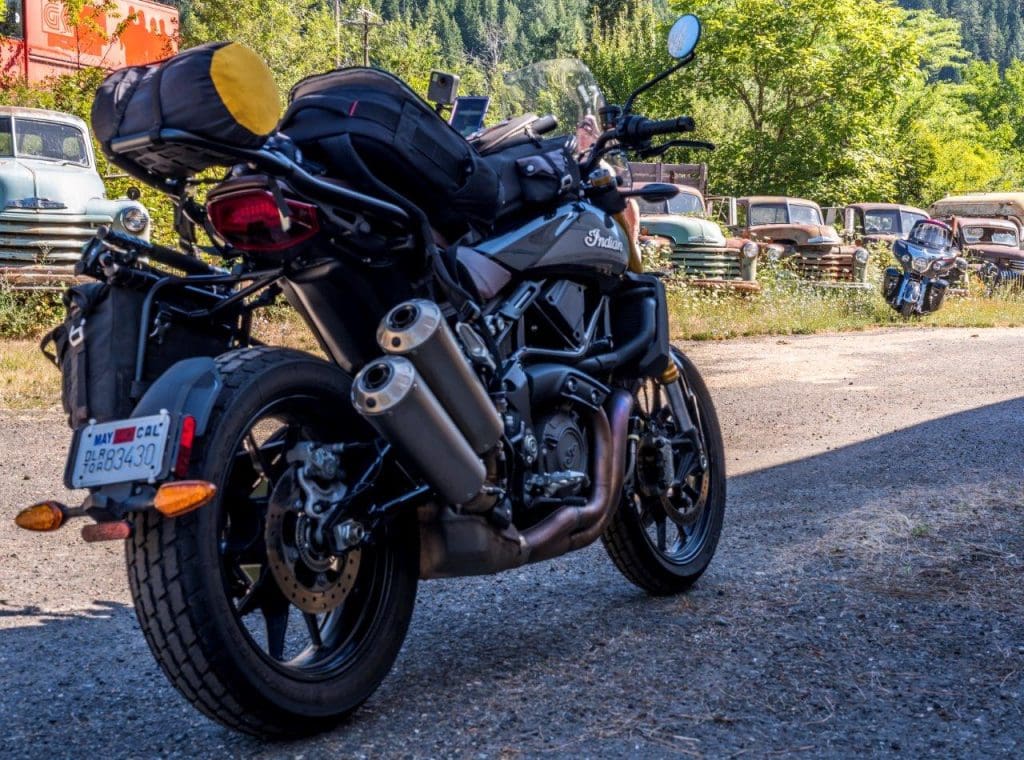
Unfortunately, the wander/weave/wobble struggle was real, and it never got better. Adding a few extra pounds of air pressure didn’t help. Removing air pressure didn’t help. I just got used to screaming “help!” inside my own head anytime I found myself on a non-standard surface.
I had to force myself to relax more than I ever have on any other motorcycle. Low and behold, the easy fix was simply to change tires, and the sport-touring Pirellis that Music City Indian hooked me up with (3400 miles later) absolutely changed everything about the “feel” of the rubber on the road and the subsequent feedback.
I was a happy camper once again, and I absolutely railed my final 600 miles like it was my job (it kinda was). I even returned to the infamous Tail of the Dragon for a weekend so I could test the FTR’s abilities without any excuses. Needless to say, the Dragon was slayed.
Dealing with each of these issues forced me to focus, pay close attention to every move I made, and eventually create a new routine for warming up, mounting, riding on grooved pavement, and parking while traveling across the county.
It wasn’t “bad” but it was different from what I was used to. I suppose a little switch-up every once in a while is good for keeping me on my toes (literally) and alert as a rider. The FTR definitely did just that.
In addition to the major curveballs mentioned above, there were a few more items that created small hassles, which were easy to brush off, but warrant a mention nonetheless.
First, adding a tail bag would have made it impossible for me and my 29” inseam to”swing a leg over” the 33.1” seat, so I was limited to one messenger bag, one tank bag, and a small accessory bag on the tail rack during my trip. The only way for me to carry more was to wear a backpack, which I did. Less than ideal.
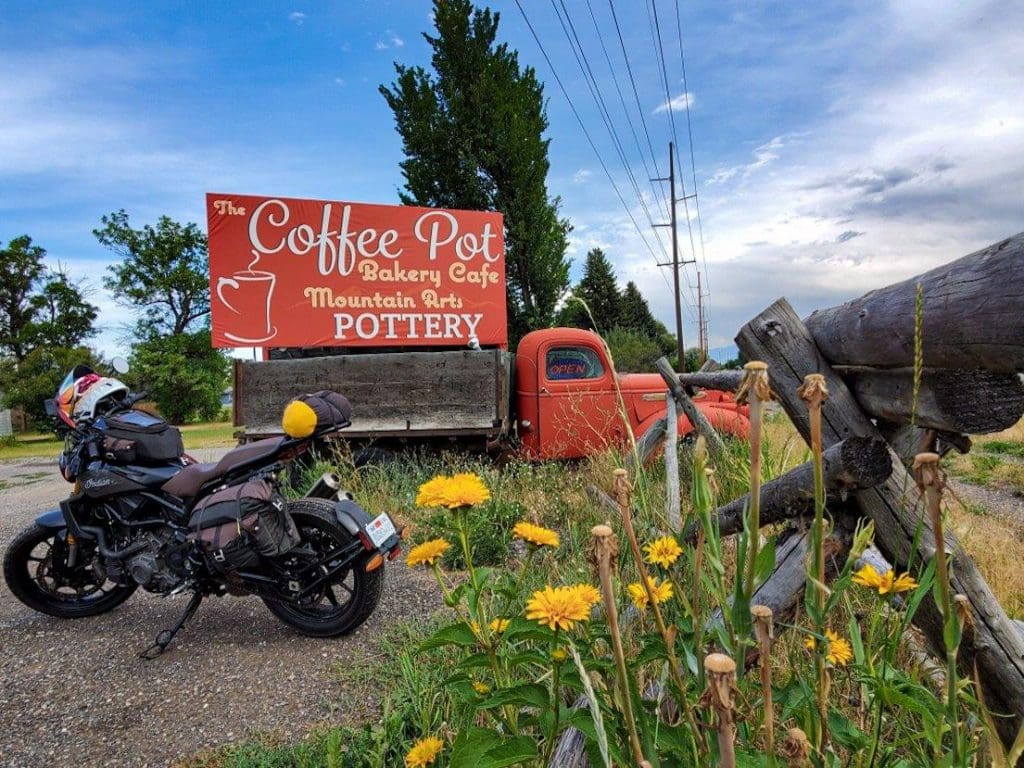
Secondly, adding the tank bag made it extremely hard to access both the ignition and the fuel cap. I had to remove my tank bag every time before turning off my ignition and/or filling up with fuel. Speaking of the fuel cap, there was no hinge, so the cap needed to be placed “elsewhere” while filling the tank. Not a huge problem, but not my favorite thing, either.
In addition, filling up the tank was difficult because of the location of the opening – bumped right up against the seat and therefore very close to my crotch – combined with the fuel tank being located under the seat and extremely hard to fill.
I eventually learned to sit on the passenger seat while filling my tank so I could regulate the flow speed from the nozzle without dismounting. About half-open on the nozzle allowed for continuous flow into the tight opening, making fill-up time take twice as long as usual.
Finally, the 130 mile range was a bit limiting when it came to touring. I am absolutely used to smaller fuel tanks, so I wasn’t bothered by this feature, but an extreme adventurer might find it cumbersome on long trips.
The Final Word On The FTR 1200 S
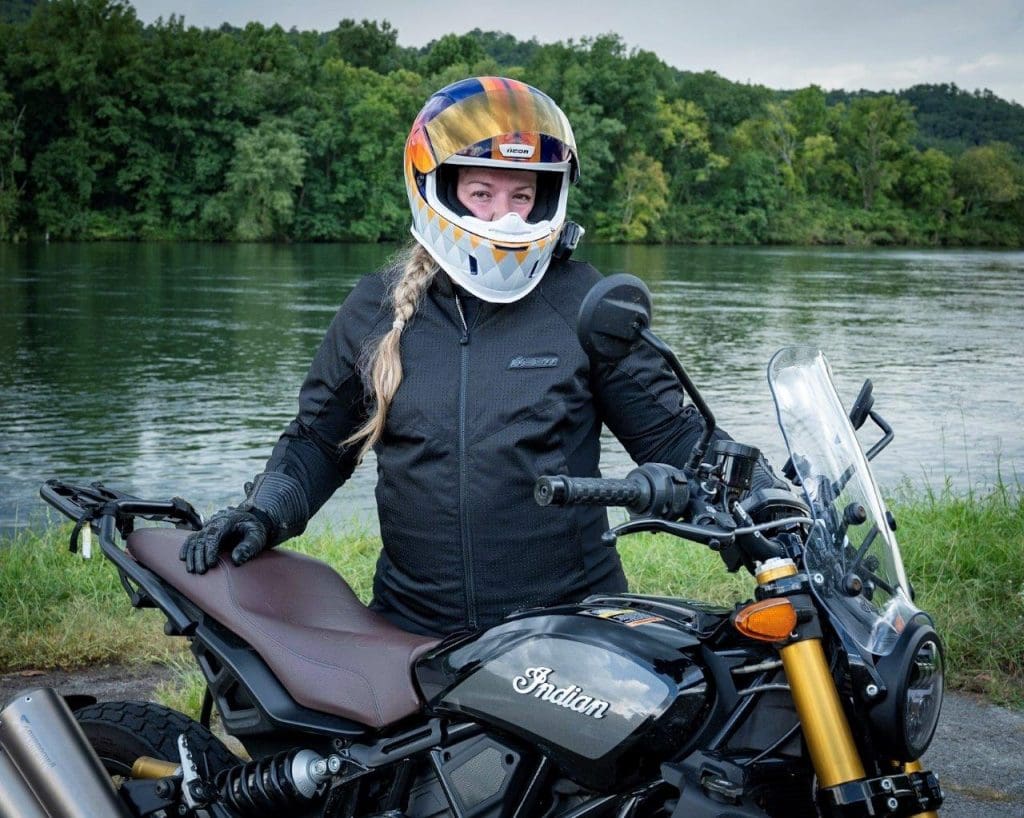
The Indian FTR 1200 S is a blast to ride, easy on the eyes and ears, and performance-focused in all situations. On top of that, it hosts a slew of electronic aides and customization options that help make the bike ready to take on any type of adventure.
Combine that with the street cred of the Indian name, a 2-year unlimited mile warranty, and high-end standard components where it counts, and you’ve got a winner in my book. At $13,999, and with a new set of tires, the price tag is absolutely reasonable for everything you get.
I personally don’t think it needs anything extra to make it a fantastic machine worth considering for your next epic adventure. I all but guarantee it will excite and delight any skilled rider with miles on the brain.
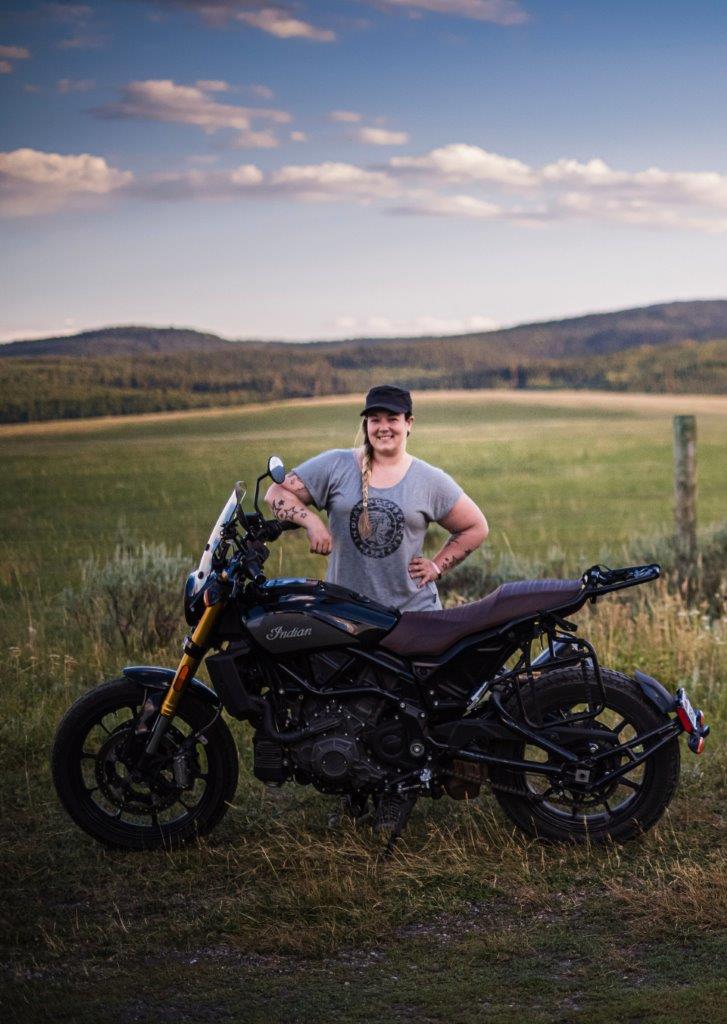
FTR 1200 S Technical Specs
Engine |
|
| Bore x Stroke | 4.016 in x 2.898 in (102 mm x 73.6 mm) |
| Compression Ratio | 12.5:1 |
| Displacement | 73 cu in (1203 cc) |
| Drive/Driven Clutch | Assist & Slip, Multi-Plate |
| Electronic Fuel Injection System | Closed Loop Fuel Injection / 60 mm Bore |
| Engine Type | DOHC, 4-Valves per Cylinder, Graded Buckets |
| Exhaust | 2-1-2 |
| Horsepower | 123 HP (91.7 KW) |
| Peak Torque | 87 ft-lb (117.9 Nm) |
| Peak Torque RPM | 6,000 rpm |
| Transmission/Final Drive | 2.882 : 1 |
| Transmission/Primary Drive | Gear Drive Wet Clutch |
Dimensions |
|
| Fuel Capacity | 3.4 gal (12.9 L) |
| Ground Clearance | 7.2 in (183 mm) |
| Lean Angle | 43° |
| Overall Height | 51.1 in (1297 mm) |
| Overall Length | 90 in (2,286 mm) |
| Overall Width | 33.5 in (850 mm) |
| Rake/Trail | 26.3° / 5.1 in (130 mm) |
| Seat Height | 33.1 in (840 mm) |
| Weight (Empty Tank / Full of Fuel) | 497 lbs / 518 lbs (226 kg / 235 kg) |
| Wheelbase | 60 in (1,524 mm) |
Brakes |
|
| Front Brakes | Dual 320mm x t5 Rotor with 4-Piston Calipers |
| Rear Brakes | Single 265mm x t5 Rotor with 2-Piston Calipers |
Tires / Wheels |
|
| Front Tires | Dunlop® DT3-R Radial, 120/70R19 60V |
| Front Wheel | Cast 19 in x 3 in |
| Rear Tires | Dunlop® DT3-R Radial, 150/70R18 |
| Rear Wheel | Cast 18 in x 4.25 in |
Suspension |
|
| Front Fork Tube Diameter | 43 mm |
| Front Suspension | Fully Adjustable Inverted Telescopic Cartridge Fork |
| Front Travel | 5.9 in (150 mm) |
| Rear Suspension | Fully Adjustable Piggyback IFP |
| Rear Travel | 5.9 in (150 mm) |
Features |
|
| Color / Graphics | Indian Motorcycle® Red over Steel Gray, Titanium Metallic over Thunder Black Pearl, Race Replica |
| Factory Warranty | 2 Years, Unlimited Miles |
| Infotainment | 4.3” Ride Command LCD Touchscreen w/ Bluetooth |
| Lights | LED Headlight, Taillight, Turn Signals |
| Standard Equipment | 3 Ride Modes (Sport, Standard Rain), Lean Angle Sensitive ABS, Stability, Traction and Wheelie Mitigation Control, USB Fast-Charge Port, ABS, Cruise Control |


